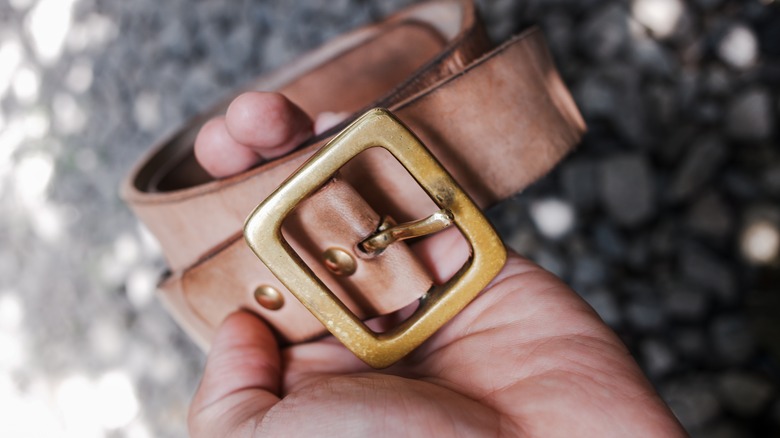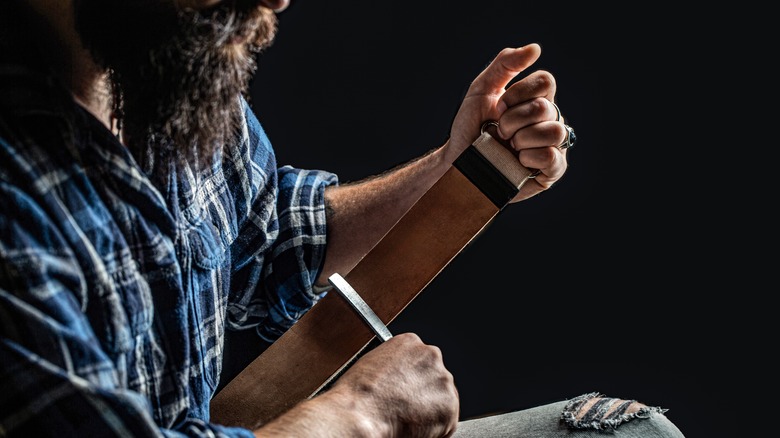Turn An Old Belt Into A Highly Functional Knife-Sharpening Strop
We may receive a commission on purchases made from links.
A well-sharpened knife is essential in every kitchen, whether you're a skilled chef or a passionate novice. Ideally, you should sharpen knives every four or six months, depending on how often you use them, as well as the types of things you're cutting and the surface you're working on. The easiest way to stick to the right schedule is to simply pay attention to how well your knife is performing. If you notice it struggling to deliver a clean cut with minimal effort, it's time to sharpen.
In a pinch, it's possible to sharpen a dull knife with aluminum foil, by running it against an emery board or using a coffee mug. However, this isn't a viable long-term solution, and results won't be optimal. Instead, add a strop to your kitchen arsenal. A strop is basically any piece of leather you can run a blade against to keep it sharp, and it's easy to DIY. Readymade strops sell online for between $40 and $60, but one can quickly be made from an old leather belt attached to a 2x3-foot piece of wood using contact cement ($7 on Amazon) and coated with a hard metal cleaning compound ($8 on Amazon). Just note that for this DIY to be effective, choosing the right belt is key. It should be made of 100% natural leather and have a totally smooth finish without any bumpy stitching. Now, here's how to craft a durable knife-sharpening strop for a fraction of the cost.
How to DIY a leather strop to sharpen knives
Place the belt on a flat surface with the top facing you, and rub a metal-cleaning compound into the leather. YouTuber Alex of Outdoors55 recommends using the finest compound possible and adding heat to help it spread better. Aim a hairdryer at the leather as you coat it with the compound, then cut the belt to the same length as the wood. Next, align the cut strap with one of the edges of the wooden block and trace its side with a pencil. Don't place the belt in the middle of the wood as this will cause issues once you start using it — your knife will slide against the wood instead of the leather. Following the contact cement's instructions, coat the underside of the belt and the marked piece of wood and remember: Once the two pieces touch, you won't be able to lift them apart. To avoid mistakes, work slowly from one end of the belt to the other, pressing it down bit by bit.
Once dry, clamp the DIY strop to a solid surface and run your knives along the leather to sharpen them. If you'd prefer a handheld strop, leave part of the wood exposed to create a handle. Mark a semi-circle on either side, followed by a straight line down from the middle of the circle to the end of the board. Saw along the lines, sand down, and you've got yourself a handle.

